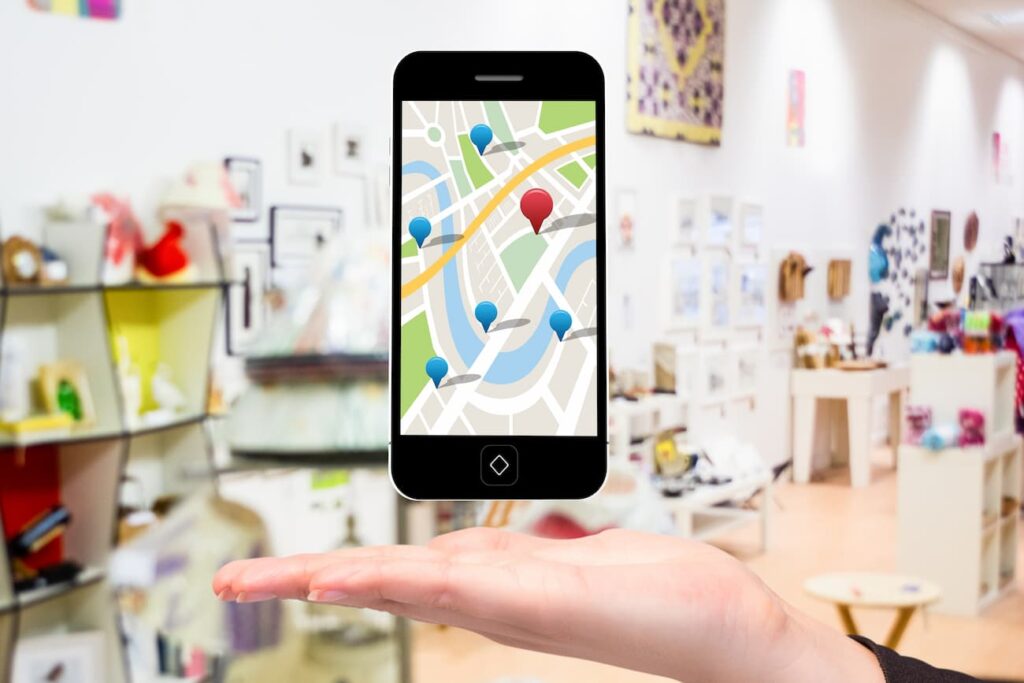
A QR code for directions is the best way to share a location without the need of entering the actual name or address on a navigation app.
Whether for personal or business use, QR codes are very convenient and can be edited to change data when needed.
When it comes to navigation, QR codes offer great advantages when sharing a location and help users get to a destination without much hassle. From Google Maps, to Waze, and Apple Maps, you can create these navigation QR codes yourself!
So, what are the advantages and when can you use them? How can you create a QR code for Google Maps or any other location app? Keep reading if you want to know!
Also see: How to Create a Waze QR Code in 5 Easy Steps
Table of Contents
- What is a Google Maps QR Code
- Dynamic QR Code vs Static QR Code
- Benefits of a QR Code for Directions
- How to Create a Google Maps QR Code
- How to Create an Apple Maps QR Code
- When to Use a QR Code for Directions
- FAQs
- Wrap-Up
What is a Google Maps QR Code
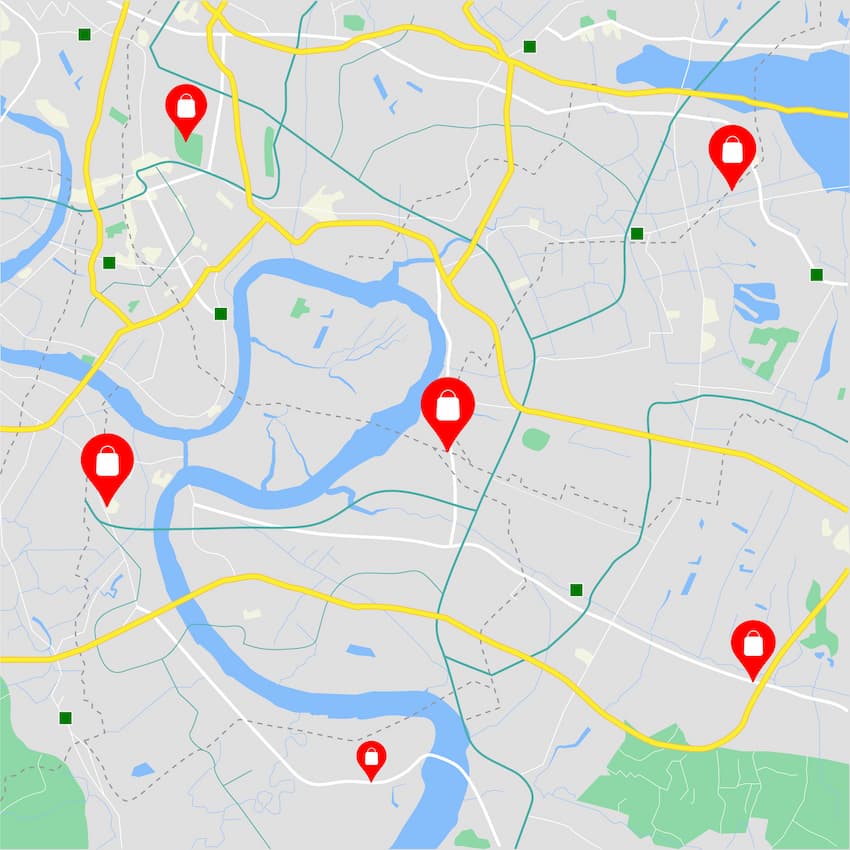
A Google Maps QR Code allows the sharing of a direction after being scanned. This QR code embeds a Google Maps location URL.
You can also create a location QR code for Waze and Apple Maps, so users don’t need to open these applications and type the place’s name. Using QR codes for directions can have several personal and business uses, such as sharing the address to someone’s homeplace, sharing the quickest route to a tourist attraction, and sharing the location of a store or business.
The best thing is that you can create QR codes for directions on QR.io yourself. You can customize them, add a logo, and change color and pattern to make them attractive to friends or business stakeholders.
Also, by creating a dynamic QR code, you can change the location’s URL as many times as you want if you need to change directions or make adjustments. So, feel free to use QR codes for directions and help people get there!
Also see: How to Scan a Menu at a Restaurant with a QR Code
Dynamic QR Code vs Static QR Code
QR codes are divided into static and dynamic. Although dynamic QR codes have the same function as static QR codes —storing information later to be accessed via a scanning device— they have some impressive superpowers.
Dynamic QR codes can store several types of information such as videos, PDFs, images, multiple links, and more.
Also see: How to Create a QR Code for a PDF in 5 Easy Steps
Dynamic QR codes for location
You can very easily create a static QR code to share a location, depending on your needs. If you don’t need to change the destination you want to link your users to, you can use the static version.
However, if you run a business or want to use location QR codes for a marketing campaign, dynamic QR codes are the way to go.
This is so because dynamic codes have great features that will certainly make a difference, as they allow you to:
- Change the embedded information whenever you want without the need to reprint the code.
- Track the number of scans.
- Track the operative system —whether it be Android or iOS.
- Track both the countries and cities where your scans are taking place.
All these extra features will allow you to retarget your marketing campaign and get the best out of the dynamic experience.
Also see: Static Vs Dynamic QR Codes: When to Use Either?
Benefits of a QR Code for Directions
Convenience
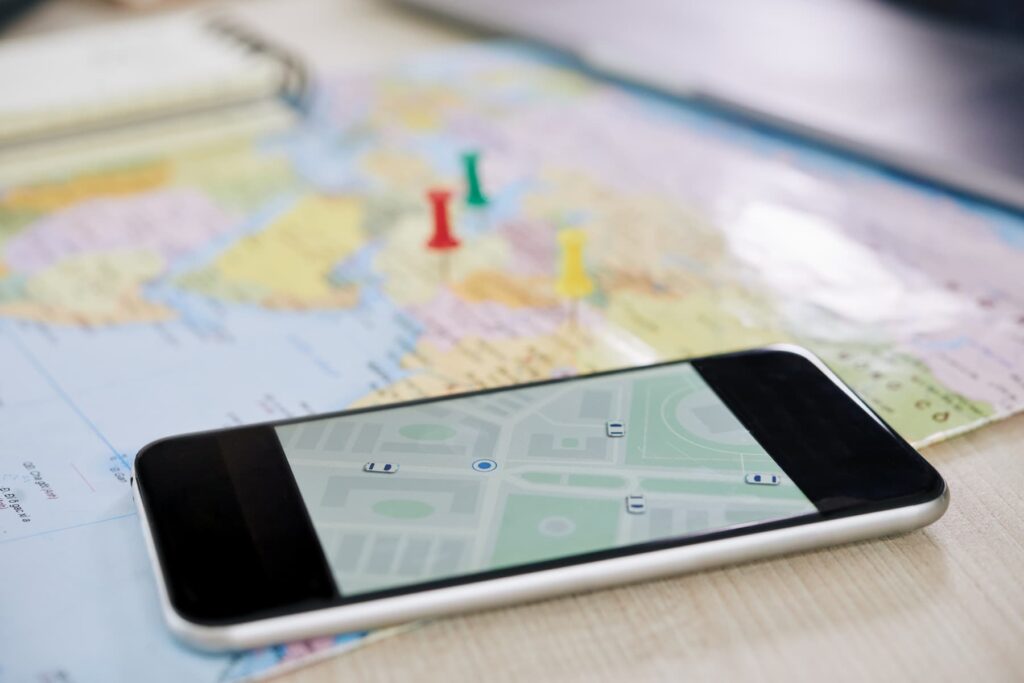
Imagine having to type or recite a specific location via WhatsApp or over the phone, whose name is complex and hard to pronounce —this is especially so during holiday trips to foreign destinations.
With a QR Code for directions, the only thing you have to do is scan the code, which will enable the navigation app, and initiate the trip with just a tap on the screen. You won’t need physical maps anymore to get to a destination!
Changing locations
A dynamic QR code will let you change the destination the code leads to, which is a great feature for business or if you’re planning a group trip and need to share locations with several people.
One code for several locations
By being editable, dynamic QR codes will help marketers save on print materials as they can use the same code on every advertisement without the need of creating a new one.
For example, if you run a coffee shop or a retail store, using a QR code for directions will help your customers and prospects get to your premises in just one scan.
How to Create a Google Maps QR Code
According to Autoevolution, Google Maps —together with Waze— is the most used mobile navigation app with over 21 million downloads in 2021. The Google Maps app is available on Android devices.
These are the steps to create a Google Maps QR code on QR.io.
Step 1. Open a QR.io account
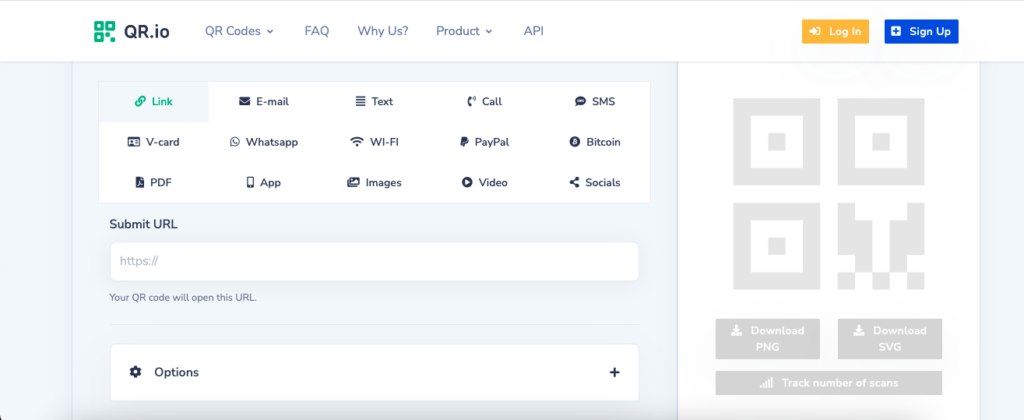
If you want to create a QR code and be able to change address URLs and track the number of scans, the device used, and the location, you must create an account. Click on Sign Up on the home page, and add your personal information when prompted to start your 7-day trial.
Step 2. Look for the location on Google Maps
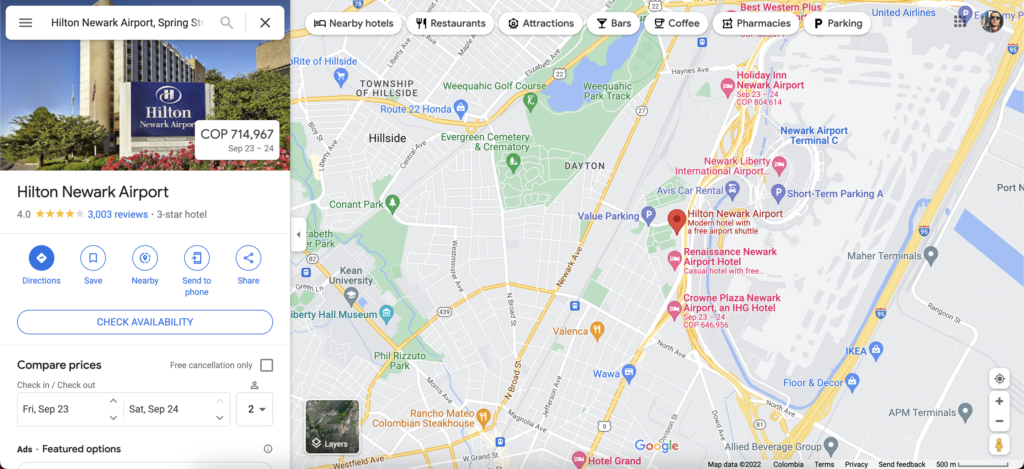
Open Google Maps and enter the name or address of a specific location —make sure you pinpoint it for better accuracy.
Step 3. Retrieve the location’s URL

To do this, go to the dashboard on the left where you can see all the information about the place, including photos, and click on the Share button. In the pop-up window, click on Copy Link.
Step 4. Go to the QR.io dashboard
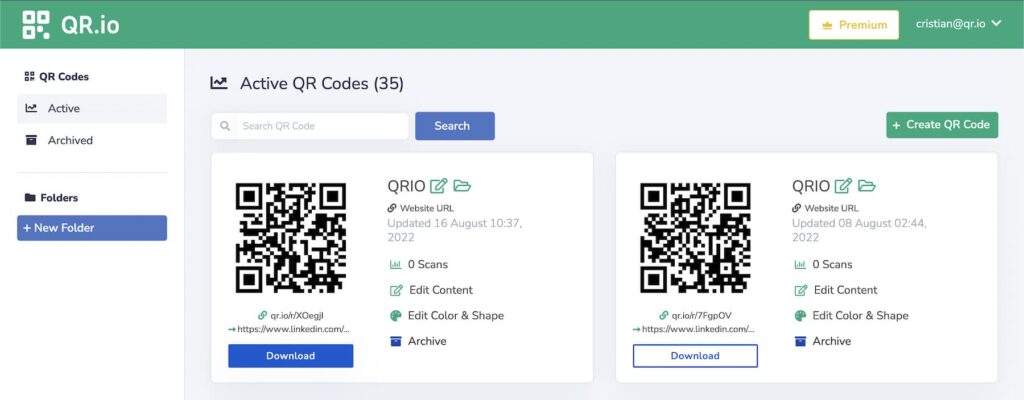
Now that you’ve copied the link, go to QR.io’s generator dashboard, click on + Create QR Code, and choose Dynamic > Website URL when prompted. Then click on Continue.
Step 5. Enter the location URL
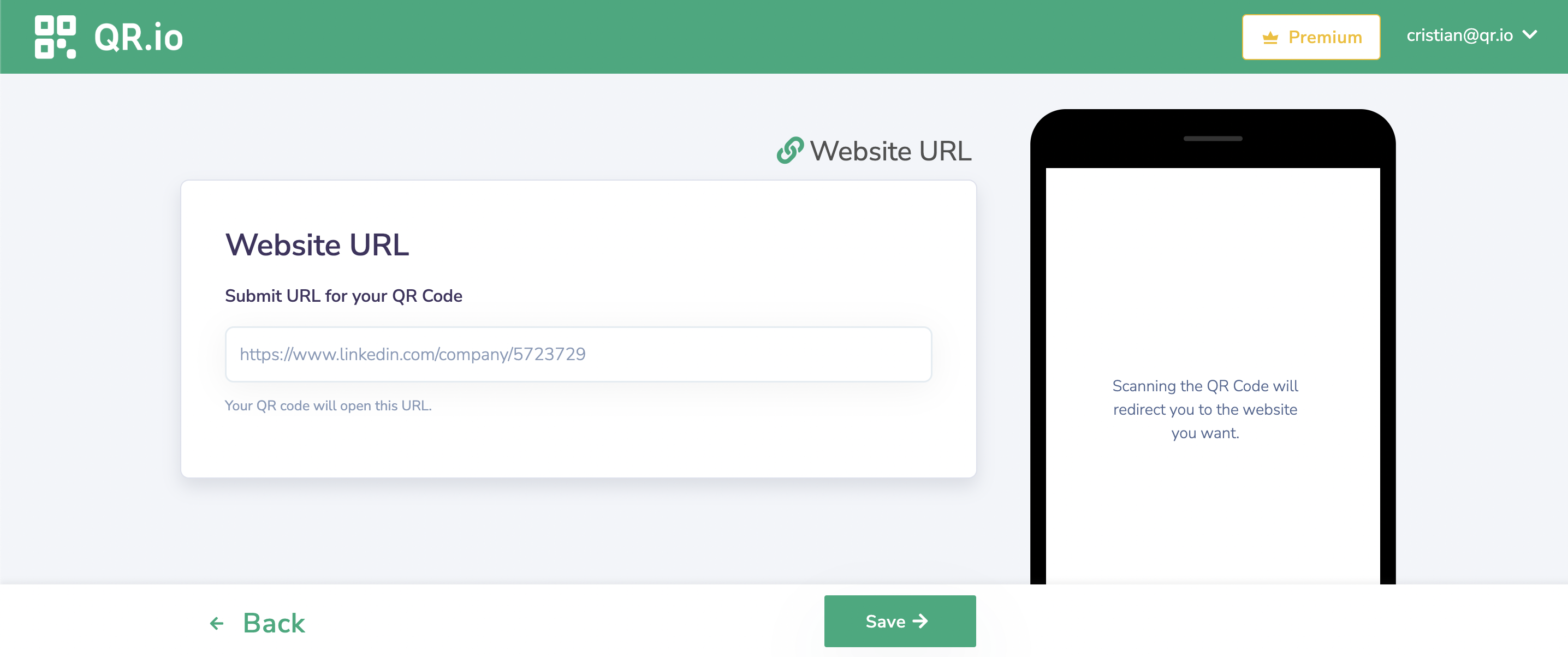
Copy and paste the URL of the location and click on Save below.
Step 6. Customize your QR code
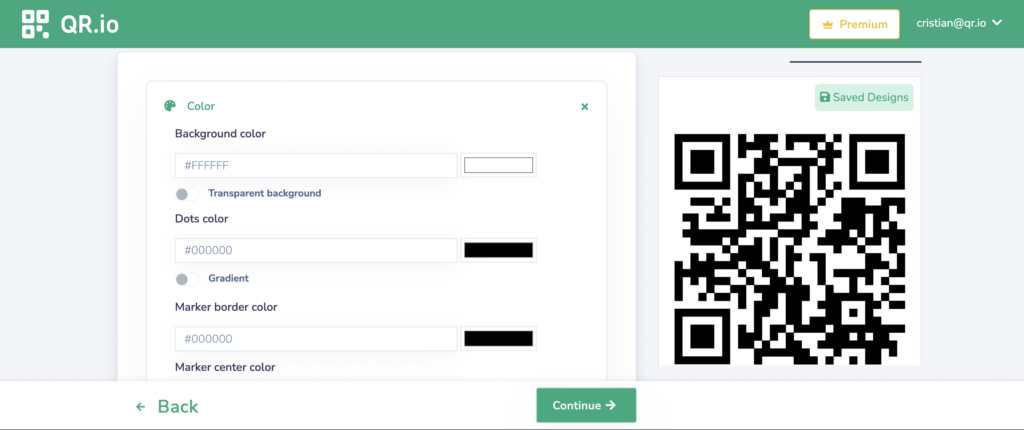
On QR.io, you can change the color and the pattern, and add a logo, a frame, or a call-to-action to make your QR code stand out!
Step 7. Download and test your QR code

Once you generate a QR code —any type— it is important that you don’t skip the most essential step: scan the QR code. Imagine sending someone the wrong way or the code not being scannable!
Also see: This Is How You Run a Proper QR Code Test
How to Create an Apple Maps QR Code
Exclusive to iOS users and the Apple devices —iPhone, iPad, Mac— Apple Maps has been Google Maps’ and Waze’s fiercest rival. A very clean interface is a key differentiator, and with at least 200 million users, a QR code for Apple Maps comes very handily.
Step 1. Open a QR.io account

If you want to create a dynamic QR code to change the exact location anytime you want, you must create an account. Click on Sign Up on the home page and add your personal information when prompted to start your 7-day trial.
Step 2. Look for the exact location on Apple Maps
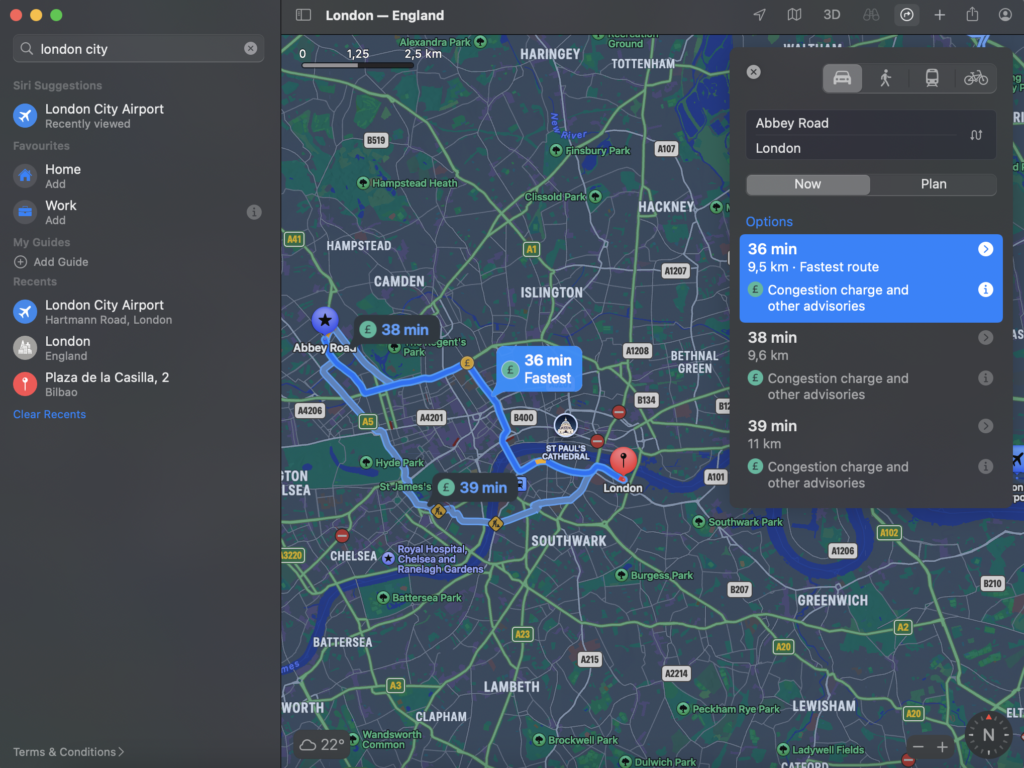
Look for the desired destination on the Apple Maps dashboard on the left, then enter the starting point on the pop-up dashboard that will appear on the right.
Step 3. Retrieve the location’s URL
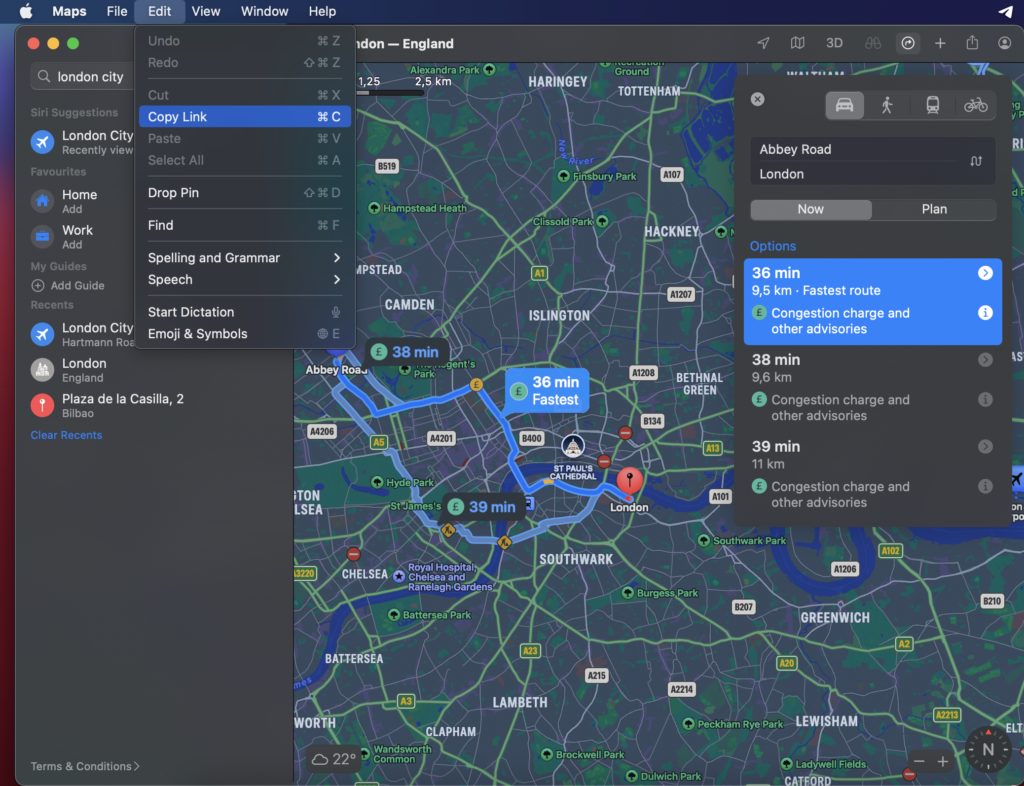
To obtain the location’s URL, go to the bar > Edit > Copy Link.
Step 4. Go to the QR.io dashboard

Go to QR.io’s generator dashboard, click on + Create QR Code, and choose Dynamic > Website URL. Then click on Continue.
Step 5. Enter the exact location URL

Copy and paste the URL of the Apple Maps location and click on Continue below.
Step 6. Customize your QR code

QR.io lets you personalize your codes by changing the pattern and the color, and adding a logo, a frame, and a call-to-action.
Step 7. Download and test your QR code

From the dashboard, you can export your code in either PNG or SVG formats, and test it from different distances and under various light conditions.
Also see: QR Code PNG Format: How to Do It Right?
When to Use a QR Code for Directions
Location QR codes can have several uses for businesses of any vertical. These are some ideas of how to leverage advertisements and conversions via QR codes.
Tourism
If you’re a tour operator or a tourist guide agency, you can use QR codes to share the routes to specific attractions and destinations to facilitate your clients to get there easily. When on holiday, travelers will find this feat very useful by having it printed on destination guides, flyers, and other types of printed material.
Hotels can also benefit by placing QR codes on their reservation websites and advertisements so guests can find your premises in a flash.
Retail
Retail stores can get the best out of navigation apps by offering their customers and prospects QR codes that will take them to specific locals. Store managers can include a location QR code in brochures, print ads, flyers, posters, and social media.
Doing so is especially useful when offering discounts at a particular store, to which you can direct shoppers. They will scan the code you have printed on a promo poster!
Also see: Posters with QR Codes: How to Boost Your Offline Marketing
Events and appointments
Whether it be a conference, a dream wedding location, or a consultation room, location QR codes can be used to give specific indications to get to the destination. You can print them or use them digitally on invitations, posters, websites, flyers, and several other mediums.
FAQs
What if my location changes in the future?
If you know you’re going to change locations soon, it’s best if you create a dynamic QR code so you can replace the destination’s URL with a new one without the need to print a new code.
Can I track the performance of my location QR codes?

By using a dynamic QR code for a destination, you’ll have the possibility to track the number of scans, the operative system, the device, and the place —country and city— so you can see how your campaign is going.
Based on the results, you can make adjustments and change the embedded URLs to recycle your code instead of creating another one and printing it on the hundreds or thousands of prints you created.
Is a location QR code generator better than a location barcode generator?
For a start, QR codes can store more information than barcodes. Also, when dynamic, they can be edited as many times as you need, which is something you can’t do with a barcode.
The tracking features of a dynamic QR code are a huge leap in data control when compared to barcodes whose usage is, despite effective, quite limited.
Wrap-Up
Using QR codes for destinations is a fantastic way of sharing a location in a convenient manner. The uses are pretty varied, from personal to business, and the ability to use them on several navigation apps such as Google Maps, Waze, and Apple Maps, will give you great versatility and freedom!
Create a QR code for locations now with QR.io!
